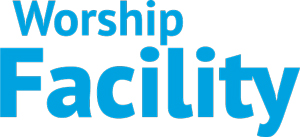In my early days in the recording industry, we used a practice called the car-test. Simply put, to hear how your mix translated to the most likely listening environment, you’d make a copy of your mix (typically on cassette back then), pile into the Chevy Nova with the band, and see how it sounded.
We’ve come a long way in terms of delivery methods since those days, and much has been written about the car-test over the years. But the challenge remains: how do you ensure your broadcast mix sounds good in the real world? To tackle this, we first need to determine how our content is being consumed on a wide scale. I’ll cut to the chase with some actual stats, which, while somewhat disappointing to audio engineers who take great pride in their work, are probably not surprising.
I polled over 500 participants on church media platforms to see what devices they use to stream church services:
60% of viewers/listeners are using a phone or tablet to stream the service.
21% are using a laptop or desktop.
16% are watching on a TV.
Less than 3% stream on home stereo or home theater systems.
Given this distribution, it’s clear that most of the audience is experiencing the service on devices that don’t typically have high-fidelity audio capabilities. This poses a unique challenge for those of us in church audio production. Do we simply stop working so hard? Should we close down our broadcast studios and reallocate resources to other areas of ministry? I don’t think so.
Understanding the majority of our audience’s experience can help us develop a broadcast mix philosophy that maximizes the practical translation to compact devices, while still producing creative, and high-quality content for higher-fidelity listening systems.

Mixing for the 81%
First, it’s crucial to understand the limitations of the devices most of your audience uses. Phones, tablets, and laptops generally have smaller speakers with limited bass response and dynamic range. This means the mix needs to be optimized to sound good on these smaller, less capable speakers. Believe it or not, the recording industry has actually been cracking this code for decades. In the late 1970s, Yamaha designed the NS-10, a low-cost, home stereo bookshelf speaker that failed to catch on in the consumer market. Somehow it made its way into the studio environment, and its inherent shortcomings became its superpower, turning it into an industry standard. The concept is simple: if you can make a mix sound good on the NS-10, it will sound great on anything. Nowadays, there are dozens of affordable studio monitors that come very close to achieving the same result. Additionally, there is software that emulates various listening environments, which can be easily added to your signal chain to ensure your mix translates well across different devices.
Regardless of your studio monitors, if you keep the main thing the main thing, with a little effort, you can develop a mix that fundamentally works on almost any device.
Prioritize Clarity
The key to a good mix that translates well across all devices is clarity. Ensuring that vocals are clear and intelligible is paramount, as the spoken word is a critical part of the worship experience. Here are some tips to achieve this:
- Equalization (EQ): Use EQ to cut frequencies that can make the mix sound muddy. Typically, reducing the low-mid frequencies (around 200-500 Hz) can help vocals and other important elements stand out.
- Compression: Apply compression to even out the dynamic range of vocals and other critical elements. This helps maintain clarity and presence without the audio levels fluctuating too much.
- High-Pass Filtering: Apply high-pass filters to remove unnecessary low frequencies from non-bass instruments. This prevents the mix from becoming too boomy and ensures that the low end is reserved for elements like the kick drum and bass guitar.
- Be mindful of the instruments that occupy the lowest audible frequency range in your studio. Obviously, bass guitar, kick drum, and extreme bass in piano and keyboards can be tricky. Rather than rely on fundamental frequencies of those instruments, concentrate on their sonics around 200 Hz and above, and apply compression generously to create more punch than sub energy. It takes some effort, but mastering this technique will keep those instruments present in your mix, even on an iPhone.
- When it comes to vocal clarity, try this exercise: Don’t look at the lyrics on the video monitor as you mix. Just as lyrics on the screens in an auditorium tend to fool our brains into thinking we’re hearing vocals clearer, the opposite is also true. In a broadcast mix, if you can clearly hear lyrics without the visual enhancement, your vocals are probably in a good place.
- Be cautious with effects. While a generous dose of reverb goes a long way to smooth out a mix, overuse of delay can be a distraction. When I am listening back to my mix on a phone, vocal delays are almost inaudible. But when listening to the same mix through high-quality headphones, subtle delays are a tasty treat.
Balance the Mix
Since many users will be listening on devices with small speakers, it’s important to balance the mix so that no single element overpowers the others. Pay particular attention to the mid-range frequencies, where much of the vocal and instrumental information resides.
A good friend and mentor once told me that about 90% of mixing church audio is making it sound right for the environment; the foundational mix, the vocal balance, the intelligibility, the right volume, the overall tonal characteristics, not too dull, not too bright. The last 10% is for you, the engineer; the perfect guitar tone, that sweet snare sound, that perfectly timed (yet subtle) stereo delay. Almost no one will notice the last 10%, and that’s ok, because it’s just for us, and our audio-engineer-nerd friends. But everything that goes into the 90% is what keeps you hired or gets you fired.
Test on Multiple Devices
One of the best practices in modern audio production is to test your mix on various devices, the 2024 version of the car-test. I typically analyze my broadcast mix in each of the following environments:
- Phone and Tablet: Pay attention to how the bass and high frequencies translate. Are the vocals still clear? Is the overall mix balanced?
- Laptop and Desktop: Test the mix on a laptop or desktop with built-in speakers. This helps ensure that your mix is not overly reliant on external audio systems.
- Headphones and Earbuds: This is where I examine the finer details of the mix that are typically inaudible on phones and tablets.
- Home stereo: Remember, the smallest portion of your audience is listening in this environment. But, depending on the system, it should be closest to what you were hearing in the studio as you streamed. Many home stereo systems have extremely exaggerated low-end reproduction. If your mix seems right on all the other devices and a bit thin on an overly bass-bloated home stereo, I wouldn’t sweat it.
- TV: Streaming to a TV can be tricky because TV speakers vary widely in quality. Ensure that the mix doesn’t lose clarity and that important elements like speech are still prominent. In all my years of mixing broadcast audio, I have received exactly ONE comment that the stream didn’t sound right on a 7.1 home theater system. Someday I’ll write an article on how your church broadcast stream should compare to “Top Gun: Maverick.” But that’s another feature for another day.
Make Use of Reference Mixes
Comparing your mix to a reference mix that you know translates well across various devices can be incredibly helpful. Choose a high-quality worship service or a professionally mixed track as your reference and compare it to your mix. Adjust your EQ, compression, and levels until your mix holds up well in comparison.
Encourage Feedback
Don’t hesitate to ask for feedback from people you trust. Encourage them to share their listening experiences and any issues they encounter. This feedback is invaluable and can guide future adjustments to your mixing process.
Take Your Time
Developing a mix that translates well across various devices takes time and patience. Don’t rush the process. Listen to your mix in different environments and make incremental adjustments. Be patient as you fine-tune your approach, and remember that every adjustment is a step towards achieving a balanced, clear, and engaging broadcast mix.
By understanding the limitations of the devices most of your audience uses and adjusting your mix accordingly, you can ensure that your investment in a broadcast studio pays off. The goal is to create a worship experience that is engaging and spiritually uplifting, no matter how it’s being consumed. Remember, clarity and balance are your best friends in this endeavor.
Finally, as you navigate the Phone-test, as always, don’t forget to listen!


